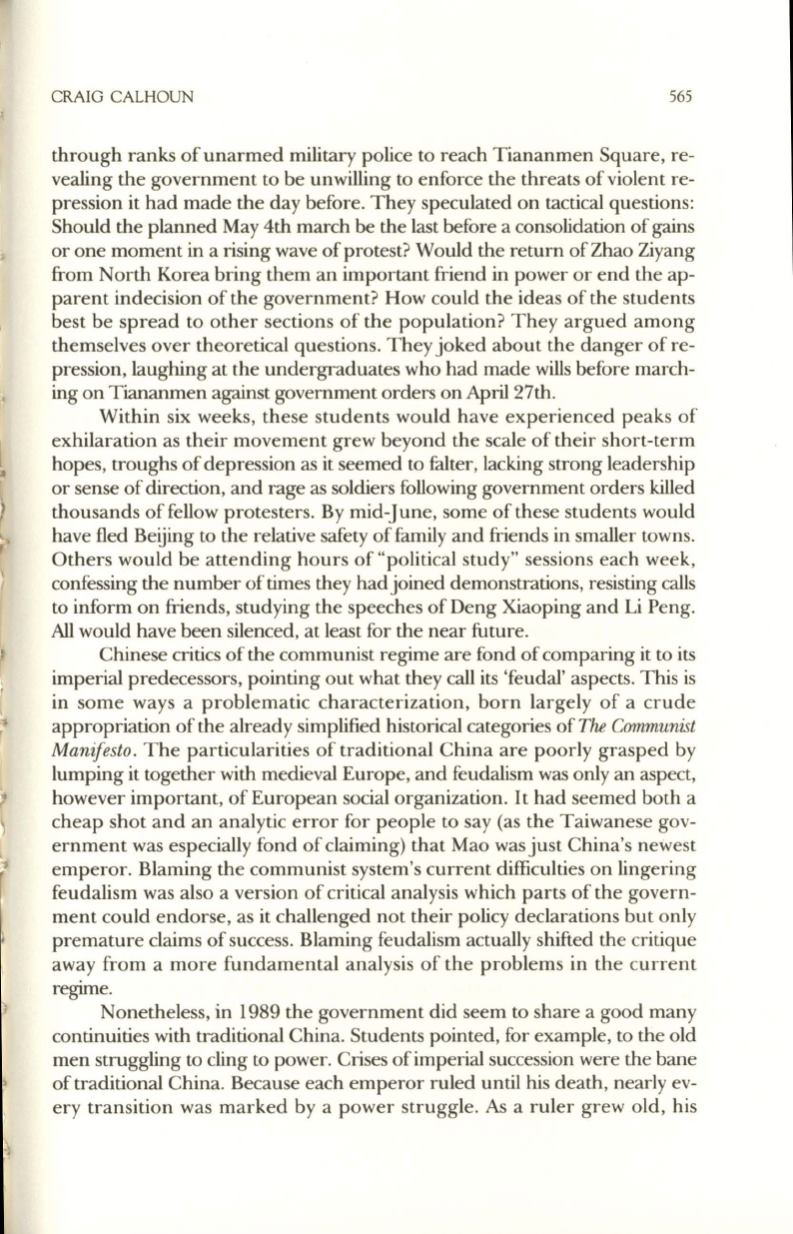
CRAIG CALHOUN
565
through ranks of unarmed military police to reach Tiananmen Square, re–
vealing the government to be unwilling to enforce the threats of violent re–
pression it had made the day before. They speculated on tactical questions:
Should the planned May 4th march be the last before a consolidation of gains
or one moment in a rising wave of protest? Would the return of Zhao Ziyang
from North Korea bring them an important friend in power or end the ap–
parent indecision of the government? How could the ideas of the students
best be spread to other sections of the population? They argued among
themselves over theoretical questions. They joked about the danger of re–
pression, laughing at the undergraduates who had made wills before march–
ing on Tiananmen against government orders on April 27th.
Within six weeks, these students would have experienced peaks of
exhilaration as their movement grew beyond the scale of their short-term
hopes, troughs of depression as it seemed to falter, lacking strong leadership
or sense of direction, and rage as soldiers following government orders killed
thousands offellow protesters. By mid-June, some of these students would
have fled Beijing to the relative safety of family and friends in smaller towns.
Others would be attending hours of "political study" sessions each week,
confessing the number of times they had joined demonstrations, resisting calls
to inform on friends, studying the speeches of Deng Xiaoping and Li Pengo
All would have been silenced, at least for the near future.
Chinese critics of the communist regime are fond of comparing it to its
imperial predecessors, pointing out what they call its 'feudal' aspects. This is
in some ways a problematic characterization, born largely of a crude
appropriation of the already simplified historical categories of
The Communist
Manifesto.
The particularities of traditional China are poorly grasped by
lumping it together with medieval Europe, and feudalism was only an aspect,
however important, of European social organization. It had seemed both a
cheap shot and an analytic error for people to say (as the Taiwanese gov–
ernment was especially fond of claiming) that Mao was just China's newest
emperor. Blaming the communist system's current difficulties on lingering
feudalism was also a version of critical analysis which parts of the govern–
ment could endorse, as it challenged not their policy declarations but only
premature claims of success. Blaming feudalism actually shifted the critique
away from a more fundamental analysis of the problems in the current
regime.
Nonetheless, in 1989 the government did seem to share a good many
continuities with traditional China. Students pointed, for example, to the old
men struggling to cling to power. Crises of imperial succession were the bane
of traditional China. Because each emperor ruled until his death, nearly ev–
ery transition was marked by a power struggle. As a ruler grew old, his


